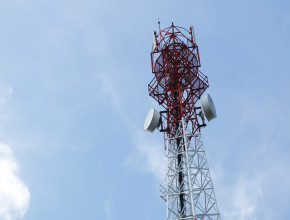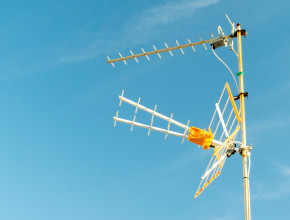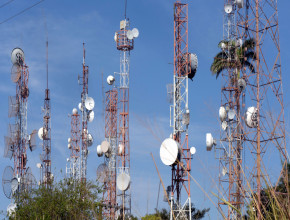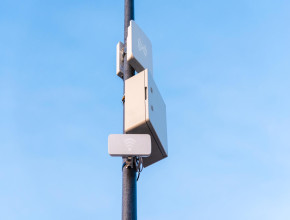
Wireless communication involves interference and disruption especially when the distance between two points is large. Jamming is a kind of interference that helps to block these communications.
Jammers are normally used to create interference in radio signals. They radiate interfering signals to the radar of the opponent and block the receiver with energy signals. In this blog, we will discuss Jamming Antenna, how it works, and different jamming techniques.
What is a Jammer?
Jammer is a kind of malicious wireless node used to create interference in a wireless network. The capabilities of a jammer differ according to the attack strategy. Jammer can contain both the same and different capabilities from legitimate nodes in the network in which they attack.
The effect of a jammer depends on various factors such as location, network influence, targeted node, and radio transmitter power. Jammers help to jam a network in several ways to make jamming possible.
How does Jammer Work?
A jammer is a kind of device that emits signals on the same radio frequencies just like mobile phones. It helps to disrupt the communication between the cell phone and phone base station and effectively disables mobile phones in the jammer range and stops them from receiving signals.
Jammers and Jamming Techniques
A jammer helps to emit interfering signals to the radar of an opponent and blocks the receiver with concentrated energy signals. In this section, we will discuss the types of jamming techniques and jammers in detail:
-
A. Jamming techniques
Jamming techniques are mainly of 2 types, noise techniques, and repeater techniques. Under noise jamming, the different types include spot jamming, barrage jamming and sweep jamming. The common kind of repeater jamming is DRFM jamming.
-
Spot jamming
Spot jamming is a kind of noise jamming in which the jammer focuses its power on a single frequency and makes the techniques ineffective against frequency-agile radar.
-
Barrage jamming
Barrage jamming is a kind of jamming of multiple frequencies by one jammer. It spreads its power across several frequencies making it less powerful at one frequency.
-
Sweep jamming
Sweep jamming is a process to shift a jammer’s full power from one frequency to another. It can jam several frequencies in quick succession and not all at the same time.
-
-
B. Repeater Technique
DRFM or Digital frequency radio memory is a kind of repeater technique that alters or re-transmits radar energy. A jammer can change the range of radar detects and create false targets. Normally, the Signal Jamming Antennas use these kinds of techniques.
Kinds of Jammers
A jammer creates interference in a wireless network during communication. It can have the same or different capabilities from legitimate nodes in the network in which they attack. The jamming effect of a jammer differs according to various factors such as location, power, and radio transmitter. Here is a list of the different types of jammers with different features and functions:
-
Deceptive Jammer
A deceptive jammer is a type of Jamming Antenna that transmits signals continuously instead of random bits. This jammer deceives other nodes to show that a legitimate transmission takes place and stays in receiving states until the jammer is switched off. Moreover, it is simple to implement a deceptive jammer.
-
Reactive Jammer
Another name for the reactive jammer is a CTS jammer. It helps to jam the network when it receives the request to send an RTS message from a receiver to the sender. This jammer starts jamming the channel after RTS is sent. The sender will not send any data because the receiver is busy getting another transmission.
The next on the list is a pulse-noised jammer. It is a kind of Manpack Jammer Antenna that can switch channels and jam on various bandwidths at different times. Apart from that, the pulse-noised jammer is also energy efficient that attacks multiple channels. It is used to jam several channels at one time.
-
Channel-Hopping Jammer
Channel-hopping jammer is a kind of jammer that has direct access to various channels by overriding the CSMA algorithm offered by the MAC layer. Besides, a channel-hopping antenna can also jam several channels at one time. In the phase of discovery, the channel-hoping jammer is quiet and not visible to its neighbors. It then performs attacks on various channels at different times as per the predetermined pseudorandom sequence.
-
Proactive Jammer
The next type of Military Manpack Jammer Antenna is the proactive jammer. It transmits jamming signals irrespective of data communication in a network. This antenna sends random bits on the channel during the operation thereby placing all the other nodes on the channel in non-operating nodes.
This jammer does not switch channels and works on only one channel until the energy is consumed. The different kinds of proactive jammers are constant, deceptive, and random.
-
Function-Specific Jammer
As the name tells, the function-specific jammer is a kind of jammer that is used to fulfill a pre-determined function. It can be both a proactive and reactive jammer and work on one channel to jam the different channels or conserve energy. Apart from that, the jammer can also maximize the jamming irrespective of energy usage. It can change the channel anytime depending on the specific functionality.
-
Follow-on jammer
Follow-on jammer is among the Military Jammers that hop on all the channels frequently. It can jam every channel for a short time. When the transmitter detects the jamming and switches the channels, this jammer scans the full band and finds a new frequency to jam again. It is a kind of power-saving jammer.
Final words
This is all about jammer and jamming techniques with different kinds of jammers. The different jammers attack wireless networks in the different ways and leave different attack effects. You can find the Best Jammer Antenna Manufacturer online today on various websites.
You can contact the Manpack Jammer Antenna Manufacturer or visit the official site to get all the information related to jammers with price, features and so on.





